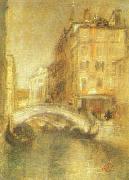
Oil On
Canvas, Real Flavor of Old Masters
|
James Abbott McNeil Whistler
|
|||
|
|
|||
| 1834-1903 James Abbott McNeill Whistler Art Locations | |||
|
|
|||
|
|
Venice James Abbott McNeil Whistler13.jpg Painting ID:: 4591 Visit European Gallery |
||
Height Width |
INS/CM |
||
|
X |
|
||
|
|
|||
|
Mikhail Vrubel
|
|||
|
|
|||
| Russian Symbolist Painter, 1856-1910 Russian painter and draughtsman. He was a pioneer of modernism, and his highly innovative technique broke with the traditions of the Academy of Arts in St Petersburg, where he had been a brilliant student; at the same time he felt dissociated from the social consciousness of The Wanderers. | |||
|
|
|||
|
|
Venice new4/Mikhail Vrubel-943359.jpg Painting ID:: 31202 Visit European Gallery |
mk72 1893 Decorative panel painted forthe Dunker mansion in Moscow Oil on canvas 319x134cm Russian Museum St.Petersburg | |
Height Width |
INS/CM |
||
|
X |
|
||
|
|
|||
|
Paul Signac
|
|||
|
|
|||
| 1863-1935 French Paul Signac Galleries Paul Victor Jules Signac was born in Paris on November 11, 1863. He followed a course of training in architecture before deciding at the age of 18 to pursue a career as a painter. He sailed around the coasts of Europe, painting the landscapes he encountered. He also painted scenes of cities in France in his later years. In 1884 he met Claude Monet and Georges Seurat. He was struck by the systematic working methods of Seurat and by his theory of colours and became Seurat's faithful supporter. Under his influence he abandoned the short brushstrokes of impressionism to experiment with scientifically juxtaposed small dots of pure colour, intended to combine and blend not on the canvas but in the viewer's eye, the defining feature of pointillism. Many of Signac's paintings are of the French coast. He left the capital each summer, to stay in the south of France in the village of Collioure or at St. Tropez, where he bought a house and invited his friends. In March 1889, he visited Vincent van Gogh at Arles. The next year he made a short trip to Italy, seeing Genoa, Florence, and Naples. The Port of Saint-Tropez, oil on canvas, 1901Signac loved sailing and began to travel in 1892, sailing a small boat to almost all the ports of France, to Holland, and around the Mediterranean as far as Constantinople, basing his boat at St. Tropez, which he "discovered". From his various ports of call, Signac brought back vibrant, colourful watercolors, sketched rapidly from nature. From these sketches, he painted large studio canvases that are carefully worked out in small, mosaic-like squares of color, quite different from the tiny, variegated dots previously used by Seurat. Signac himself experimented with various media. As well as oil paintings and watercolours he made etchings, lithographs, and many pen-and-ink sketches composed of small, laborious dots. The neo-impressionists influenced the next generation: Signac inspired Henri Matisse and Andr?? Derain in particular, thus playing a decisive role in the evolution of Fauvism. As president of the Societe des Artistes Ind??pendants from 1908 until his death, Signac encouraged younger artists (he was the first to buy a painting by Matisse) by exhibiting the controversial works of the Fauves and the Cubists. | |||
|
|
|||
|
|
Venice new11/Paul Signac-247655.jpg Painting ID:: 36972 Visit European Gallery |
mk115 1905 Oil on canvas 130x163cm | |
Height Width |
INS/CM |
||
|
X |
|
||
|
|
|||
|
konrad magi
|
|||
|
|
|||
| konrad magi(1878 to 1925),was an Estonian landscape painter. He was one of the most colour-sensitive Estonian painters of the first decades of the 20th century, and Magi works on motives of the island of Saaremaa are the first modern Estonian nature paintings. Magi received his elementary art education from the drawing courses of the German Artisans Society of Tartu (1899?C1902.) At the same time, he was keenly engaged in theater, violin, and various sports. Magi continued his art education as an unattached student in Saint Petersburg (1903?C1905.) In the autumn of 1907, he went to Paris. There Magi studied at a free academy. From 1908 to 1910, he lived in Norway. In 1912, Magi returned to Tartu, where he worked as an art teacher. In Åland, he created delicate plant vignettes in the style of Art Nouveau: Kahekesi (Two together; 1908; China ink drawing). In Paris, Magi was influenced by Impressionism and Fauvism, which had a significant impact on his colours: Lilleline vali majakesega (A flower field with a little house; 1908?C1909), Norra maastik manniga (A Norwegian landscape with a pine; 1910). From 1918, the influence of Expressionism is manifest, fostered by Mägi extreme sensitivity and emotional response to the anxious times: Puhajarv (Lake Puha); 1918?C1920), Otepaa maastik (Landscape of Otepaa; 1918?C1920). Also influenced by Expressionism are his big figure compositions Piet?? (1919), Kolgata (Golgatha; 1921). Konrad Magi - Rannamaastik (Beach landscape)Magi new artistic period, begun on a trip to Italy, brought calmer tempers: Varemed Capril (Ruins in Capri; 1922?C1923). Along with nature pictures, he painted flowers and portraits. Magi mostly beautiful female models express the Art Nouveau ideal of beauty: Holsti (1916). In his later portraits from the 1920s, a more serious temper is expressed: Madonna (1923?C1924). | |||
|
|
|||
|
|
Venice new24/konrad magi-356556.jpg Painting ID:: 72909 Visit European Gallery |
"Venice". Oil on canvas. 70.5 x 57.3 cm cjr | |
Height Width |
INS/CM |
||
|
X |
|
||
|
|
|||










